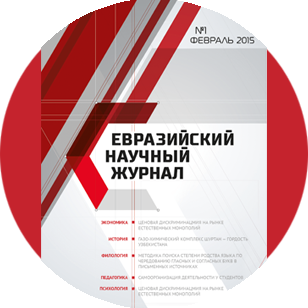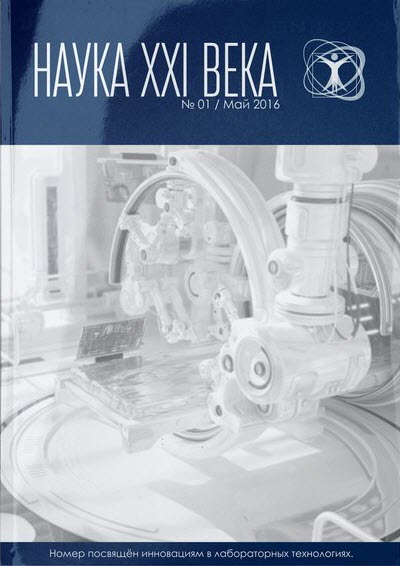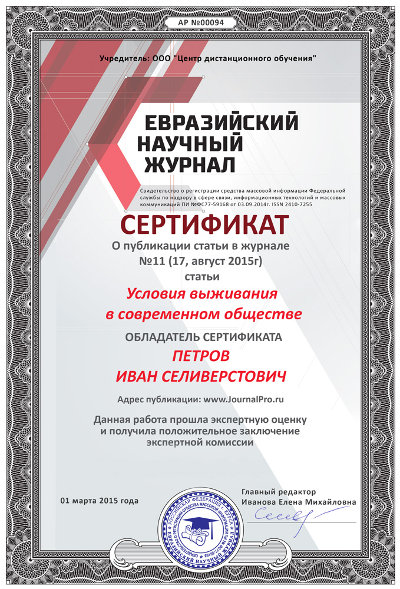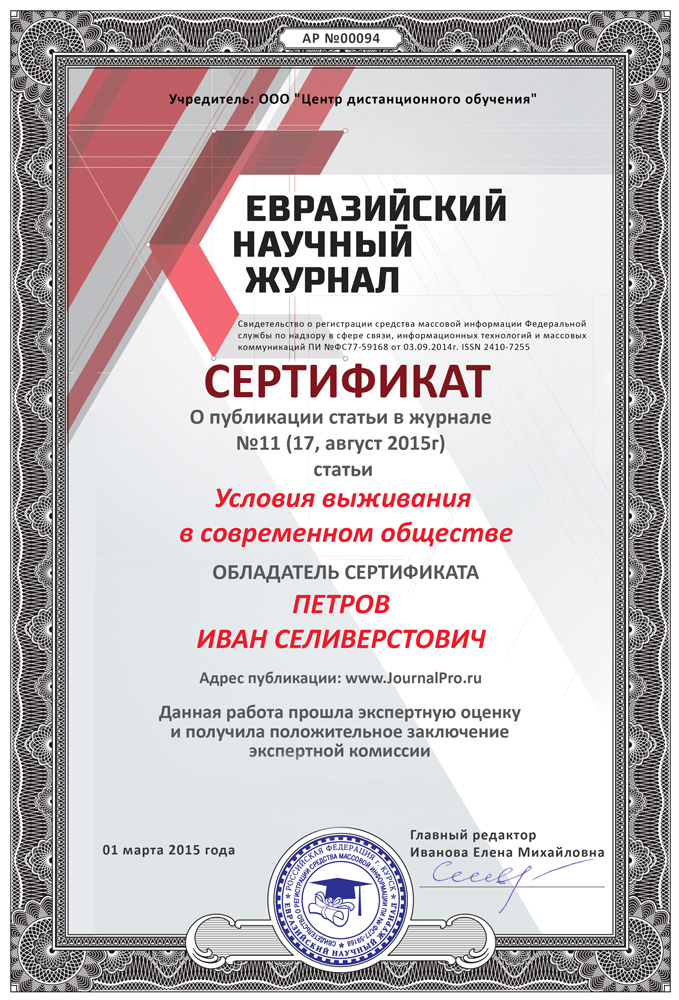Срочная публикация научной статьи
+7 995 770 98 40
+7 995 202 54 42
info@journalpro.ru
The importance of improving students’ accuracy in written communication
Рубрика: Педагогические науки
Журнал: «Евразийский Научный Журнал №7 2018» (июль, 2018)
Количество просмотров статьи: 3967
Показать PDF версию The importance of improving students’ accuracy in written communication
Bobokulova Oydin Khayrulla kizi
Termez, UZBEKISTAN
Communication will be effective only when it gets the desired action or response. The modern requirements for the foreign language proficiency in high school include the presence of foreign language communicative competence of students. It is defined as a certain level of language proficiency, speech and social-cultural set of knowledge, skills and abilities that enable to vary acceptably and appropriately their communicative behavior in a communicative way depending on the functional predictors of foreign language communication and creates the basis for the qualified information and creative activities in various fields.
The structure and the levels of foreign language communicative competence of students are correlated with the willingness of the student to use the possibilities of foreign language for professional self-education. The cognitive level of the development of this competence as pedagogical and linguistic knowledge implies the development of theoretical readiness, operational — foreign language communicative skills, the formation of the technological readiness, personal and professional as the qualities of the teacher and the experience of practice-based foreign language communication reveals through the professional and personal readiness of the student. However, in theory and practice the problem of formation of accuracy in written communication is not investigated thoroughly.
Written Communication involves expressing yourself clearly, using language with precision, constructing a logical argument, note taking, editing and summarizing, and writing reports.
There are three main elements to written communication:
· structure — the way the content is laid out
· style — the way it is written
· content — what you are writing about
Structure and layout can be relatively quickly learnt but learning how to write good quality content takes much longer. Accuracy refers to the mechanics of the language, more specifically in producing some of the following ideas:
· Clear and articulate speaking or writing.
· Language free from grammar mistakes.
· Words spelled and/or pronounced correctly.
· Language appropriate to the situation and/or context.
There are unsympathetic listeners to consider too. A native English speaker in the real world outside of the classroom, with no experience in teaching a foreign language, and who is unaware of the mistakes of particular groups of learners may not understand the student. What had been intelligible in the classroom for the teacher and other students is suddenly no longer intelligible outside the classroom. Breakdowns in communication occur. This occurs so often because the teacher generally understands the mistakes made by his students. But too much attention to accuracy results in students unable to use the language. They breakdown sentences, translate, and look at the sentence from different angles to minimize mistakes, all of which results in very slow response times. The language becomes less able to carry out its purpose, namely to effectively communicate ideas and information.
So, for avoiding such mistakes we can use the following points in any lesson to improve accurate language production by the students:
Devote the early portions of the lesson to accuracy. Here students will first learn a new target structure, so attention to its near-perfect production takes precedence. The teacher should push for few to no mistakes.
Use repetition. This is very important, as repetition allows the target structure to become increasingly automatic. Drills for vocabulary improve recognition and correct pronunciation, conjugation, etc.
Make students aware of the need for accurate language production. Some students may just want to speak and speak and speak in a conversation-based class, believing that the more they say the more capable at English they become. This simply is not true. The teacher should explain to students the need for accuracy, and the problems that can and do result from too much to the flow of language fluency.
Create a student-centered class. In other words, students should take responsibility for their learning. Peer correction and self-correction are important components in the classroom, as students generate language awareness and are better able to monitor for and minimize mistakes.
REFERENCES
- Ж. Жалолов. Чет тил ўқитиш методикаси — Тошкент 2012 й.
- Brandl, K., 2007. Principles of Communicative language Teaching and Task-Based Instruction.
- Harmer, J., 2001. The practice of English language teaching. 3rd ed. Harlow: Longman.
- Richards, J. C., 2006. Communicative Language Teaching Today. [e-book] New York. Cambridge University Press.









